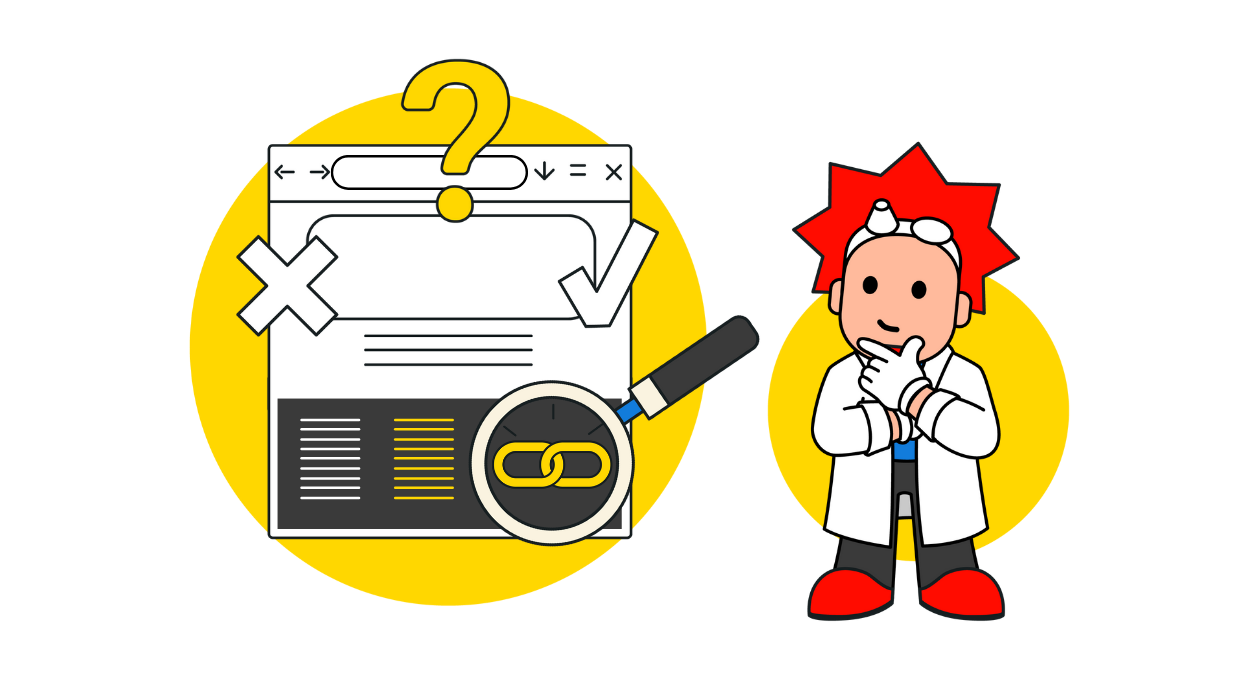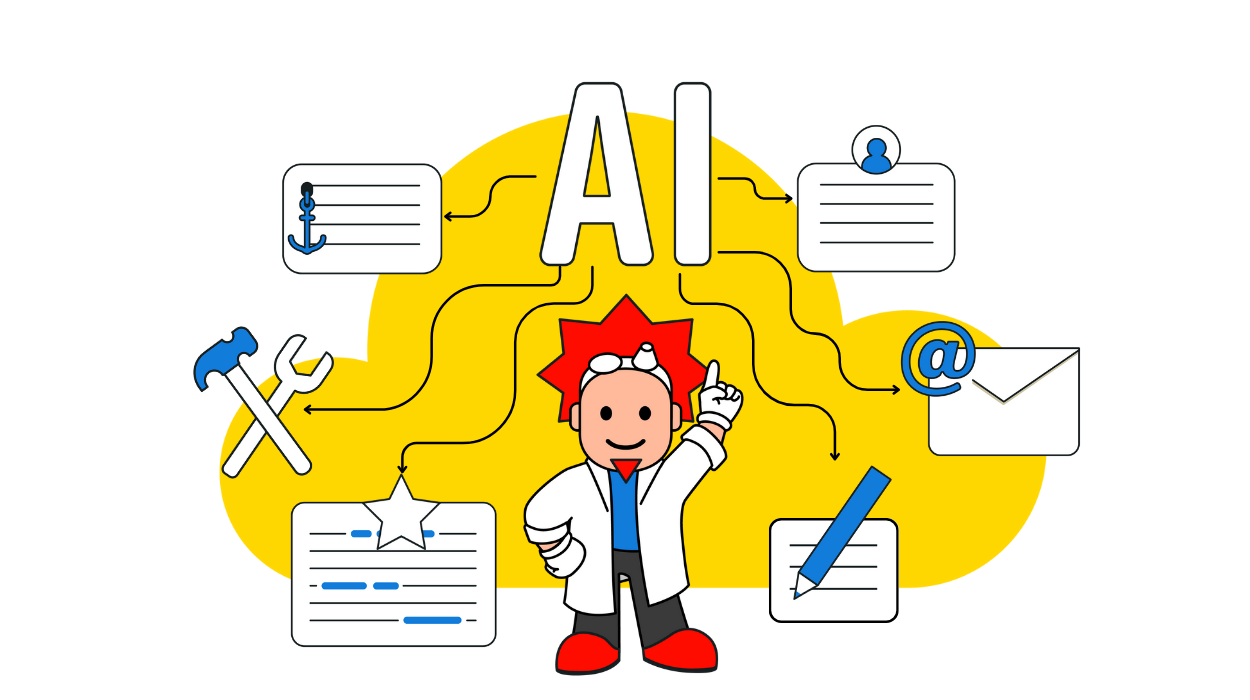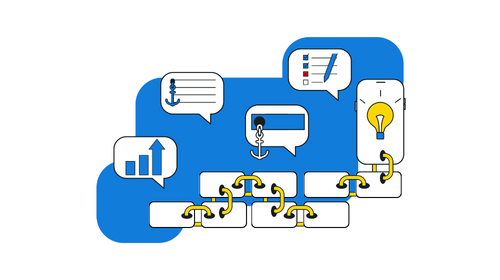Whether you're a seasoned SEO pro or just getting started in the game, you know that if there's one concept that never changes is the constant debate about what's good and bad for your rankings. And today, we're going to dive headfirst into the great footer link debate of 2023. Yes, we're talking about those little links hiding at the bottom of your website that hardly anyone checks out unless they're trying to find your Privacy Policy or Terms of Service.
Some SEO gurus swear by them, while others say they're as useful as a screen door on a submarine. So, what's the verdict? Are footer links good or bad for SEO in 2023? Let's find out.
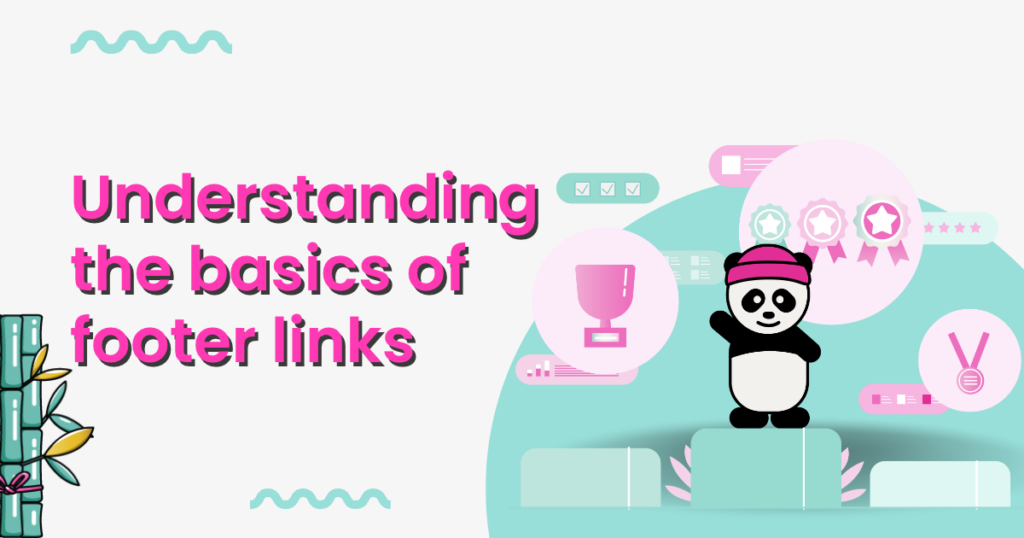
Before we dive into the nitty-gritty of footer links and explain whether they are worth your attention in improving SEO rankings in 2023, it's crucial to understand what they actually are and what purpose they intend to serve. These are the hyperlinks webmasters place at the bottom (or "footer") section of a website and could include links to your social media profiles, contact information, copyright notices, or other internal pages on your site, and sometimes, to external sites. Also, the footer section can vary in size and complexity depending on the design of each website.
However, while many might overlook them as insignificant details, well-placed footer link navigation menus can be incredibly useful from a user experience perspective when visitors need quick access to a particular page or want more information about certain topics the site covers. Moreover, some users may prefer scrolling down through content rather than using the header menu, which makes footers an excellent option, especially if optimized properly with relevant anchor texts directing to useful information.
One major advantage is that these navigational aids help search engine bots crawl deeper within a particular site, providing quicker indexing opportunities and helping distribute "link juice" throughout the site via interlinked articles.
To learn more about site structure and internal linking, check out this guide by Yoast on internal linking for SEO.
That being said, some argue that footer links can be seen as spammy and manipulative if they're overused or used in an attempt to manipulate search engine rankings, especially when pointing to an external website with poorly optimized anchor text, which could result in a penalty from Google.
Now, let's talk about the elephant in the room!
How Google evaluates footer links: Do they impact your ranking?
And if they do, then in a good or bad way? It turns out that the answer isn't so straightforward! The truth is that no one knows precisely what goes on in the mysterious algorithms of search engines when they crawl and index websites. However, experts have a fair understanding of some factors that can influence whether or not your footer links are considered good or bad for SEO.
Google is all about improving user experience nowadays. This focus includes/ when evaluating footer links.
So when it comes to those sneaky little hyperlinks lurking in your site's footers section, what matters most is their intent!
That's right—Google wants to know whether they exist purely for keyword-stuffing purposes or actually help users navigate through a particular website. The search engine giant has repeatedly stated its preference towards user-focused content and natural-looking anchor text distribution across pages rather than shoddy tactics like attempting to manipulate SERP rankings artificially with over-optimization. It loves nothing more than useful and relevant content on websites, hence why an abundance of irrelevant footer links can hurt your rankings.
What that means is if these footer links make sense and genuinely benefit users by offering related and helpful information, then voila! You can expect no harm, faster and in-depth indexing, which could result in higher search engine rankings.
So, it's essential to ensure you don't go overboard with hyperlinks placed at every available opportunity and consider potential usability for visitors navigating your website.
In other words: Keep them relevant but limited!
Which footer links can you safely use without worrying about Google's trigger-happy nature?
Great question! It all boils down to the nature of your website and what kind of links you include in those footers.
If you have an e-commerce site with tons of valuable links pointing customers toward popular brands or gift ideas, shipping, and return policies, then go ahead, and use them. These kinds of footer links are beneficial for user experiences on your website since they facilitate their shopping journey.
However, if a majority, or even worse, ALL the footer hyperlinks, lead back only to keyword-optimized pages within one's domain without any added value whatsoever—that's where things get tricky.
If you're looking for a list of footer links that won't get you penalized by Google, here's what we recommend:
- About us
- Contact
- Location and address information
- User testimonials
- Navigation
- Terms and conditions
- Privacy policy
- Copyright warnings
- Legal disclaimer
- Sitemap
- Links to social media platforms
- Latest news
- Announcements about upcoming activities
The secret is focusing on what matters most to your site visitors seeking more information when deciding which pages should be linked in the footers, allowing them instant access to what they are looking for so they don't feel overwhelmed by useless hyperlinks.
So always keep user intent at heart when designing sites. Think about whether each link would add genuine value instead of just being there solely for SEO purposes, and you'll get your answer.
What if you want to place external links within your footer section?
First of all, ask yourself: Do you really need them?
It depends on whether those external sites aid the user's purpose. If you're linking to relevant sources that provide additional information for visitors or are part of a genuine partnership agreement with other websites in complementary niches, by all means, go for it! Such footer links may improve the site's credibility by showing the Google bot how well-connected the business is within its community.
However, if these outbound URLs are planted only to gain some form of monetary compensation from selling ad space and don't provide genuinely useful resources, well, now we're talking about spammy territory!
So you must decide whether these external footers offer any significant benefit. If not, you should consider removing them outright before causing any harm.
Or, there's another way of doing it: We are talking about incorporating no-follow attributes.
One can use "no-follow" tags to the external links, especially when they're sitewide and deemed to offer not many perks to the users. This can keep everyone safe—both the primary page and the external website without risking potential penalties or negative effects on rankings.
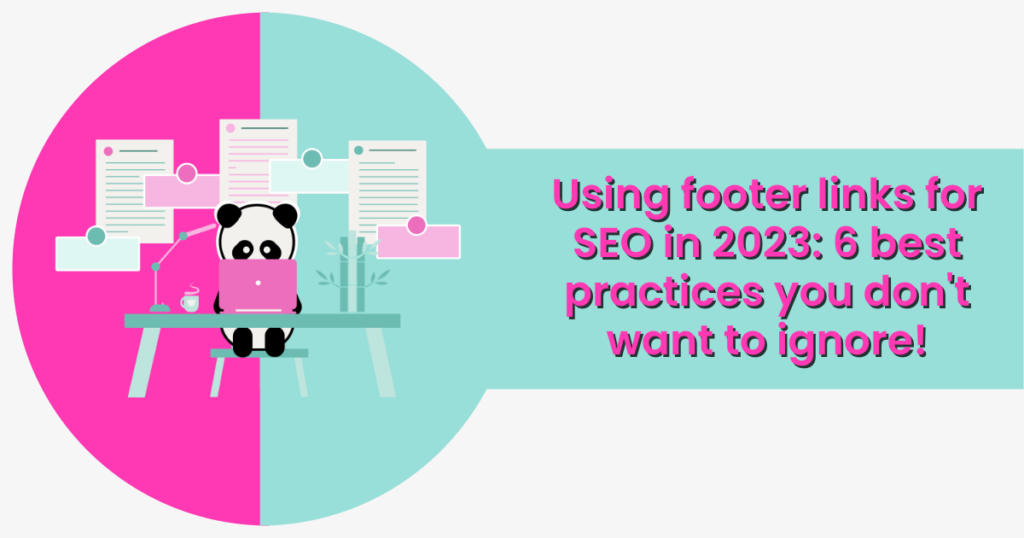
Now that we've established the basics of footer links and their impact on SEO rankings, it's time to discuss the red flags you must keep in mind and some best practices to help ensure your website's footers are optimized correctly in 2023. So let's get straight into it.
1. Keep it simple and concise: The big brother is watching you!
It's important to remember that shortcuts for boosting SEO can often do more harm than good.
In previous years, some websites added an excessive amount of footer links with hopes of improving the SEO factor across all linked pages. For instance, a company operating in multiple cities might include individual regional landing page links on its website's footer section sitewide without considering user experience.
However, if Google sees these actions as manipulative efforts intended purely to boost rankings instead of enhancing the overall experience for visitors, that can lead your site down the SERPs.
Hence, the first rule is pretty straightforward: Don't overdo it! Cramming lots of links into the footer section can look spammy or overwhelming to users who may feel lost when navigating through pages quickly. Limiting their number to only essential pages will ensure visitors a better user experience.
2. Link only highly relevant external links
Ideally, the footer portion should only contain internal links, and this is what many so-called SEO experts would want you to believe. What they don't tell you is one can totally add external links to the footer! Just make sure they're related and helpful for users. For example, linking to an authoritative source of information or a credible website in line with your content is absolutely okay—no need to worry if you do it the right way. Instead, that can give an extra edge in your SEO efforts by providing more comprehensive resources to the visitors.
That being said, it won't be wise if you're stuffing too many of them, even if they are relevant to your niche. You must always tread carefully when dealing with such practices as this can dilute the SEO power of your site, passing fewer "link juice" benefits to individual external links as well as decreasing the source site's credibility.
3. Use no-follow generously
Perhaps you're a web developer who designs and builds sites across various industries and niches. Therefore, it is only natural that you want to showcase them on your website and link to some prominent ones in your footer section as well. However, these external sites belong to your clients, and they do not necessarily have to be related to your "web design and development service" niche by any means.
In such cases where you're kind of forced to include unrelated external URLs in your footer, it's always better to use no-follow attributes to mark them as non-votes and avoid getting penalized for spamming by Google. This tells search engine bots not to follow these links and prevents them from passing any "link juice" in terms of SEO ranking.
Furthermore, no-follow tags can be especially useful for affiliate marketing. One can link directly with a partner site using specific tracking URLs without giving away valuable SEO endorsements. In this way, website owners could add beneficial partnerships while setting up some form of protection against penalties arising from unwanted linking practices.
To learn more about no-follow links and when to use them, read this article on no-follow links by Search Engine Journal.
4. Don’t over-optimize the anchor texts
Anchor text optimization was once a hugely popular SEO tactic, where target keywords were used as anchor texts to drive better rankings. However, this practice is now seen as spammy and can lead to potential penalties from Google.
That's why we recommend against repeatedly using exact match phrases for every link you include in the footer section; instead, use brand names wherever possible as a safer practice. What we mean by that is "John Doe Web Studio" would be an ideal anchor text instead of "best web design company in New York" for an external footer link. You must aim to provide users with clear ideas about what they're clicking on without being too salesy.
5. Keep the footer uncluttered: Ensure proper placement of the links
The position (and presence) of footer links must be well-planned, even within multiple levels or hierarchies, depending on how complex your website architecture is. This allows you to utilize valuable real estate down below efficiently while avoiding cluttering things both visually and functionally, which may affect user experience in a negative way.
For instance, an e-commerce site could have product category listings as part of the main navigation bar in the footer, with additional subcategories beneath them. However, these subcategories should open only after hovering over corresponding categories as needed rather than taking up more space by default.
6. Include crucial information for your customers: Add contact info, privacy policy, and more
Footer links must be not only user-friendly and relevant but also contain essential information, such as the link to your business contact page, that may come in handy for visitors. Having precise contact details makes communication between businesses and customers easier. Similarly, including privacy policies or terms of service can instill further trustworthiness within users.
The plus point is that while it might not immediately impact SERP rankings directly, supporting user needs with comprehensive footer navigation can drive higher traffic to your site by levelling up the overall customer experience.

So, you now have the inside scoop on which footers to include and ditch! Do you want some stellar demonstration? Lucky for you, we’ve found two websites that totally nailed their footer link placement.
1. Wikipedia: One of the best footers to get inspired by
Wikipedia is an excellent example of how to create a user-friendly footer that provides easy navigation to essential information without inundating the visitor with too many links. Their footer includes important internal pages (About, Contact, Terms of Use, Privacy Policy, etc.), highly relevant external sources (Wikimedia Foundation and MediaWiki), and default third-party licence credit (Creative Commons). The layout is clean, well-organized, and intuitive, allowing users who need specific information about Wikipedia or want quick access to other valuable resources.
For more examples of well-designed footer links, check out HubSpot's list of 15 excellent website footer examples.
2. Moz: A timeless design
Moz's sleek website design incorporates its key pages in the footer. The essential navigation menu at this perfect place looks legit and adds value instead of appearing spammy. One can also notice the impeccable placement of the beautifully designed social media icons with plain copyright text at the bottom. Moreover, besides the major social platforms, the site doesn’t host any third-party external footer links, making this a classic footer section any site can safely follow.
Final thoughts: A recap

So, what have we learned from all these discussions about footers and SEO? Here are a few simple rules to follow:
- Avoid stuffing your anchor text with too many keywords.
- Ensure the links you include in your footer are relevant and helpful for your visitors.
- Organize them smartly! Don't just create one big list of hyperlinks that nobody wants to use or look at.
- Cross-linking is fine as long as it's natural-looking; don't overdo it!
- Don’t hesitate to use no-follow attributes—your contact or privacy policy page doesn’t need that extra link juice.
Remember: The key metrics have never changed; what benefits users always trumps any grey or black hat techniques in the long run.
